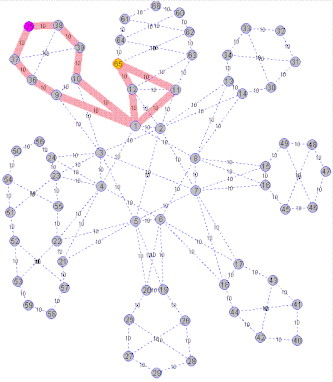
Equal-cost multi-path routing (ECMP) is a routing strategy where packet forwarding to a single destination can occur over multiple best paths with equal routing priority. Multi-path routing can be used in conjunction with most routing protocols because it is a per-hop local decision made independently at each router. It can substantially increase bandwidth by load-balancing traffic over multiple paths; however, there may be significant problems in deploying it in practice.[1]
YouTube Encyclopedic
-
1/3Views:55310 1131 505
-
Load Balancing Equal Cost Multi-Path (ECMP) Static Routing Packet Tracer
-
Routes That Must Win Twice | Cisco CCNA 200-301
-
SR-TE - Segment Routing - Path Computation Element (SR-PCE) - Introduction
Transcription
History
Load balancing by per-packet multipath routing was generally disfavored due to the impact of rapidly changing latency, packet reordering and maximum transmission unit (MTU) differences within a network flow, which could disrupt the operation of many Internet protocols, most notably TCP and path MTU discovery. RFC 2992 analyzed one particular multipath routing strategy involving the assignment of flows through hashing flow-related data in the packet header. This solution is designed to avoid these problems by sending all packets from any particular network flow through the same path while balancing multiple flows over multiple paths in general.[2]
See also
- Link aggregation
- Shortest Path Bridging – establishes multiple forward and reverse paths on Ethernet networks.
- Source routing
- TRILL – enables per flow pair-wise load splitting without configuration and user intervention.
References
- ^ Multipath Issues in Unicast and Multicast Next-Hop Selection. doi:10.17487/RFC2991. RFC 2991. Retrieved 16 December 2013.
- ^ Analysis of an Equal-Cost Multi-Path Algorithm. doi:10.17487/RFC2992. RFC 2992.
External links
- Etutorials: Equal-Cost Multi-Path (ECMP) Routing
- Paris-Traceroute: traceroute for ECMP networks
- Dublin-Traceroute: NAT-aware traceroute for ECMP networks
- Traffic Engineering With Equal-Cost-MultiPath: An Algorithmic Perspective
